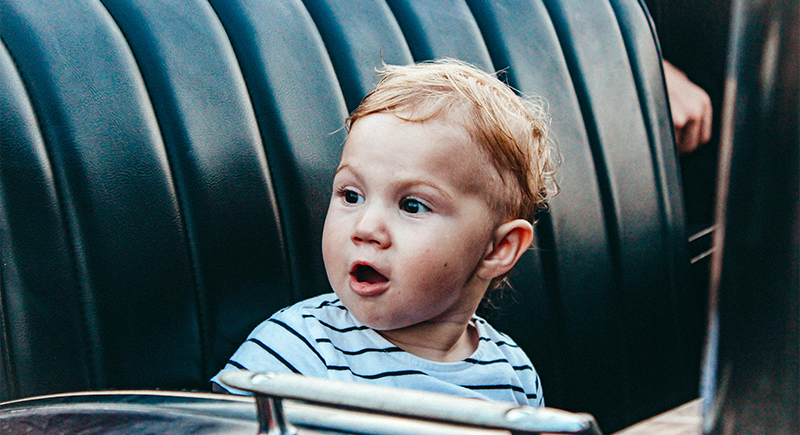9 Childhood Habits We Thought Were Safe But Weren’t
Childhood was a time of curiosity and adventure, but not everything we thought was safe turned out to be harmless. Activities that seemed fun often came with hidden dangers. From simple habits to risky play, here are some common childhood practices that carried unforeseen consequences—and the lessons they’ve taught us.
Eating Raw Cookie Dough

Credit: pexels
Enjoying raw cookie dough was a sweet temptation, but it came with hazards. Raw eggs risked salmonella, while uncooked flour could carry bacteria like E. coli. Though it seemed harmless at the time, this habit highlighted the importance of food safety and avoiding uncooked ingredients in our diets.
Chewing on Pencils or Erasers

Credit: pexels
Many children nibbled on pencils or erasers out of habit or boredom. What we didn’t realize was that this exposed us to germs and sometimes toxic coatings. Accidental ingestion of broken bits also posed choking hazards, making this seemingly innocent behavior more concerning than it appeared.
Riding in Cars Without Seatbelts

Credit: pexels
Decades ago, seatbelt use was less enforced, and children often sat unrestrained. This lack of protection left passengers vulnerable to severe injuries in accidents. While roaming the backseat felt like freedom, it underscored the critical need for seatbelt safety, a standard we now take seriously.
Playing Outdoors Without Sunscreen

Credit: pexels
Spending hours in the sun was a carefree activity, but skipping sunscreen left us unprotected from harmful UV rays. The resulting sunburns and long-term risks, such as premature skin aging and melanoma, were an unintended consequence. Today, sunscreen is an essential part of staying safe outdoors.
Drinking from Garden Hoses

Credit: pexels
Grabbing a quick drink from the garden hose felt refreshing, but hoses are not designed for potable water. Harmful chemicals, such as lead or BPA, could leach from the materials, especially when left in the sun. This once-common habit highlighted the importance of clean drinking sources.
Jumping Off Swings or Playground Equipment

Credit: flickr
Leaping off swings or climbing to the highest points on playground structures was a thrilling challenge. However, these stunts frequently led to sprains, broken bones, or concussions. This childhood pastime reminds us that excitement sometimes came at a painful price without proper safety measures.
Sharing Food or Drinks with Friends

Credit: Wikimedia Commons
Offering a sip of a drink or a bite of food felt like an act of friendship. Unfortunately, it also spreads germs and illnesses, from colds to stomach viruses. While sharing created bonds, it also taught us the importance of hygiene and boundaries when it comes to food and beverages.
Skipping Handwashing Before Eating

Credit: pexels
Running to the dinner table without washing our hands after outdoor play exposed us to countless germs. Dirt, bacteria, and other pathogens on our hands could cause digestive issues or infections. This habit serves as a timeless reminder of why proper hygiene is essential, even in everyday situations.
Playing with Fireworks or Sparklers

Credit: flickr
Fireworks and sparklers made celebrations magical but carried serious risks without supervision. Mishandling these items often resulted in burns or eye injuries. What seemed like innocent fun reinforced the need for caution, adult oversight, and proper handling to prevent accidents during festive occasions.
Standing on Rolling Chairs

Credit: pexels
Using rolling chairs to reach high shelves seemed like a clever shortcut, but it was far from safe. The unstable surface could easily tip over, leading to falls or head injuries. This risky improvisation taught us the value of using proper tools, like ladders or step stools.
Picking Scabs or Cuts

Credit: iStockphoto
Many children couldn’t resist picking at healing wounds, thinking it would speed up the process. In reality, this habit delayed recovery and increased the risk of infections or scars. It’s a simple example of how patience can go a long way in allowing the body to heal naturally.
Climbing Trees Without Precautions

Credit: pexels
Tree climbing was a classic adventure, but many of us took unnecessary risks by climbing too high or choosing unstable branches. Falls often led to scrapes, fractures, or worse. While the activity encouraged exploration, it also demonstrated the need for caution and awareness of one’s surroundings.
Running Barefoot Outdoors

Credit: pexels
Ditching shoes while playing outside felt freeing, but bare feet were vulnerable to sharp objects, hot surfaces, and infections. From stepping on broken glass to contracting athlete’s foot, running barefoot came with unexpected dangers. This simple joy taught us the importance of protection, even during carefree moments.
Exploring Near Open Water

Credit: pexels
Playing near ponds or streams was a favorite pastime, but many children lacked swimming skills or awareness of the dangers. Accidental falls into the water could quickly turn into life-threatening situations. These experiences remind us how vital swimming lessons and adult supervision are in preventing accidents.
Nail-Biting or Thumb-Sucking

Credit: flickr
Nail-biting and thumb-sucking were common childhood habits but introduced bacteria into the body and sometimes caused dental problems. These behaviors often led to avoidable illnesses or orthodontic issues. Recognizing the impact of such habits emphasizes the importance of breaking them early for better hygiene and health.
Wearing Costume Jewelry

Credit: pexels
Many childhood dress-up sessions included colorful, inexpensive jewelry. Unfortunately, some shiny pieces contained harmful materials like lead or cadmium. Prolonged skin contact or accidental chewing made exposure risky. This playful habit highlighted the importance of regulating children’s products and ensuring that even pretend treasures are safe to wear.
Sitting Too Close to the TV

Credit: pexels
We were often warned that sitting too close to the TV would ruin our eyesight. While that part was exaggerated, staring at a screen for hours without breaks could cause eye strain and headaches. This habit taught us the importance of moderation—and that some old warnings weren’t entirely off the mark.